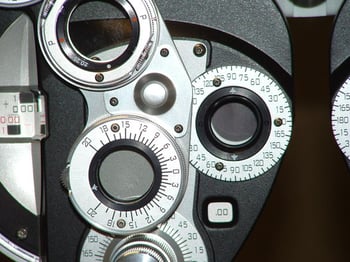 For millions of people worldwide, conditions such as macular degeneration and retinitis pigmentosa can cause progressive and irreversible vision loss, brought on by a loss of function in the eye’s photoreceptor cells. In an effort to turn back the clock on this process, a researcher from the University of Oregon is implementing a novel technology.
For millions of people worldwide, conditions such as macular degeneration and retinitis pigmentosa can cause progressive and irreversible vision loss, brought on by a loss of function in the eye’s photoreceptor cells. In an effort to turn back the clock on this process, a researcher from the University of Oregon is implementing a novel technology.
UO scientist Richard Taylor is using recently patented, articifical fractal-based implants to restore sight to the blind. The patent is the result of research supported by numerous philanthropic organizations, as well as the Air Force Research Laboratory and the Office of Naval Research.
In addition to sight recovering mechanisms, the patent of these artificial fractals could support technologies designed to mimic nerve activity in multiple applications across animal and human biology.
 "(Fractals) are a trademark building block of nature," said Taylor, a professor of physics at UO. "In math, that property is self-similarity. Trees, clouds, rivers, galaxies, lungs and neurons are fractals. What we hope to do is adapt the technology to nature's geometry."
"(Fractals) are a trademark building block of nature," said Taylor, a professor of physics at UO. "In math, that property is self-similarity. Trees, clouds, rivers, galaxies, lungs and neurons are fractals. What we hope to do is adapt the technology to nature's geometry."
According to a university press release, once perfected, the implants would generate an electrical field that would fool a sea of glial cells that insulate and protect neurons from foreign invaders. Fractal interconnects would allow electrical signals to operate in "a safety zone biologically" that avoids toxicity issues.
"The patent covers any generic interface for connecting any electronics to any nerve," Taylor said, adding that fractal interconnects are not electrodes. "Our interface is multifunctional. The primary thing is to get the electrical field into the system so that reaches the neurons and induces the signal."
"We hope to engage the right set of partners to develop the technology over time as the concept moves into potentially vast forms of medical applications," said Charles Williams, associate vice president for innovation at the UO. "Dr. Taylor's interdisciplinary science is a hallmark of the creativity at the University of Oregon and a great example of the international research collaborations that our faculty engage in every day."
In addition to being a UO professor of physics, Dr. Taylor is the director of the UO Materials Science Institute, which houses 35 faculty and over 100 graduate students, and has an annual grant income of $16M. He is also the director of Fractals Research LLC and head of the Fractals Research Laboratory at the University of Oregon.
Dr. Taylor is one of many researchers at the University of Oregon who are highly subsidized for their ongoing research projects, and receive plenty of funding to aid their work.
For example:
- 2013 Life Science R & D Expenditures: $32,295,000.
- 2014 NIH Funding: $27,858,568.
- Researchers at the University of Oregon recently received $3.1 million in life science funding from the National Institutes of Health to fund a zebrafish model organism database.
 As a leading science research institution, the University of Oregon is home to dozens of research departments and laboratories that use lab equipment and supplies every day.
As a leading science research institution, the University of Oregon is home to dozens of research departments and laboratories that use lab equipment and supplies every day.
When its time to purchase new lab supplies in 2015, these researchers plan on attending the 5th Annual BioResearch Product Faire™ Front Line event on September 1.
This premier life science event is an opportunity for life science researchers and lab suppliers in the Northwest to network and discuss the latest biotech and lab supplies. If you are interested in attending this popular annual event as a researcher or as an exhibitor, click below:
Get regular updates about University of Oregon science and other leading universities by clicking below:




